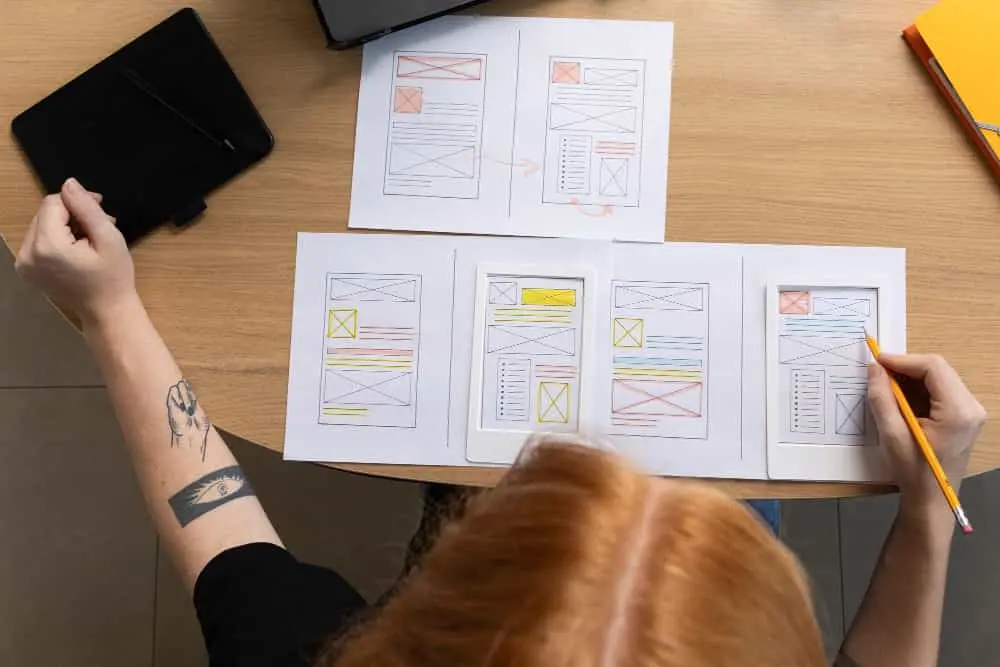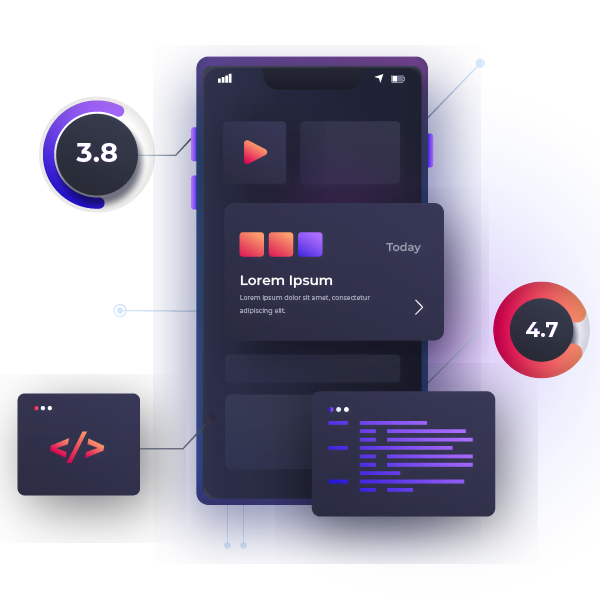In the ever-evolving landscape of the digital world, UX design has emerged as a crucial element in defining the success of products and services. The way users interact with a website, application, or any digital platform can significantly impact their overall satisfaction and loyalty. In this article, we will explore the importance of UX design, its role in shaping success, and why 2023 is the perfect time to embark on a journey to master this dynamic field.
The Importance of User Experience (UX) Design
User experience design is not just about aesthetics; it goes beyond creating visually appealing interfaces. At its core, UX design is about understanding users’ needs, desires, and pain points to provide them with seamless, enjoyable interactions. A well-crafted UX can enhance customer loyalty, increase user engagement, and ultimately boost conversion rates. In a competitive digital landscape, a positive user experience can be a differentiator that sets your brand apart from the rest.
How UX Design Can Impact Your Success
UX design can be a game-changer for individuals and businesses alike. For businesses, investing in UX design translates into higher customer satisfaction, reduced support costs, and increased revenue. Mastering UX design opens doors to exciting career opportunities and personal growth for individuals. Whether you are an aspiring designer or a seasoned professional, the knowledge of UX design can propel your success to new heights.
Understanding UX Design
What is UX Design?
UX design encompasses the process of designing products or services with a primary focus on meeting users’ needs and expectations. It involves a deep understanding of user behavior, cognitive psychology, and design principles to create interfaces that are intuitive, efficient, and enjoyable to use.
The Key Principles of UX Design
Several principles underpin the practice of UX design, including simplicity, consistency, and accessibility. A user-centric approach, iterative design, and empathy for users are at the heart of creating successful user experiences.
The Role of UX Design in Modern Business
In today’s business landscape, where customer satisfaction is paramount, UX design plays a pivotal role. It influences customer perception, brand loyalty, and ultimately the success of a product or service. Businesses that prioritize UX design have a competitive advantage, attracting and retaining more satisfied customers.
The Evolution of UX Design
A Brief History of UX Design
The concept of user experience dates back to the early days of computing when designers and researchers started recognizing the impact of human-computer interaction. From the command-line interfaces of the past to the visually engaging digital experiences of today, UX design has come a long way.
Current Trends in UX Design for 2023
As we approach 2023, the landscape of UX design is witnessing exciting advancements. Trends like voice interfaces, augmented reality (AR), and personalized experiences are gaining traction. Keeping abreast of these trends can give designers an edge in their careers and help businesses stay ahead of the competition.
The Imperative of Embracing UX Design in 2023
The Growing Demand for UX Designers
With the rising significance of user experience, the demand for skilled UX designers is on the rise. Companies across industries are seeking professionals who can create intuitive, user-friendly interfaces to attract and retain customers.
Exciting Career Opportunities in UX Design
A career in UX design offers a wealth of opportunities for growth and creativity. From working with startups to joining established tech giants, UX designers can explore diverse industries and make a meaningful impact on users’ lives.
Building a Foundation in UX Design
Essential Skills for Aspiring UX Designers
To thrive in the world of UX design, certain skills are essential. These include user research, information architecture, wireframing, prototyping, and usability testing. Acquiring these skills equips aspiring designers to tackle real-world design challenges effectively.
Recommended Tools and Software
In the digital age, the right tools can significantly streamline the design process. From design prototyping to usability testing tools, understanding and working with the latest software is crucial for efficient and effective design workflows.
The UX Design Process
Step-by-Step Guide to the UX Design Process
The UX configuration process follows a methodical way to deal with making client-driven arrangements. From understanding user needs to testing and refining designs, a step-by-step guide helps designers navigate the complexities of the design journey.

The Importance of User Research and Analysis
User research is the foundation of User Experience design, helping designers gain valuable insights into users’ behaviors, preferences, and pain points. By conducting thorough research and analysis, designers can make informed decisions that cater to users’ needs.
Creating User Personas
Understanding and Defining User Personas
User personas are fictional representations of target users, providing valuable context for design decisions. By empathizing with these personas, designers can create experiences tailored to specific user groups.
How User Personas Drive Design Decisions
User personas serve as guiding beacons throughout the design process, shaping decisions about layout, content, and functionality. A deep understanding of user personas ensures that designs resonate with the intended audience.
Information Architecture and Wireframing
Organizing Content for Intuitive User Experiences
Effective information architecture lays the foundation for intuitive navigation and seamless user interactions. By organizing content logically, designers can ensure that users find what they need effortlessly.
Transforming Ideas into Visual Wireframes
Wireframing is a critical step in the design process, translating ideas and concepts into low-fidelity visual representations. Wireframes serve as blueprints for the final design, allowing designers to iterate and refine before adding visual elements.
Designing for User Interface (UI)
Principles of Effective UI Design
UI configuration centers around making outwardly engaging and useful points of interaction. By adhering to design principles such as hierarchy, contrast, and typography, designers can craft interfaces that engage and delight users.

Implementing Best Practices for UI
From color choices to button placements, implementing UI design best practices ensures users can interact seamlessly with interfaces. By paying attention to every detail, designers create visually cohesive and user-friendly experiences.
Interaction Design and Prototyping
Designing Interactive Elements for Engaging Experiences
Interaction design revolves around designing elements that users can interact with, such as buttons, menus, and animations. Thoughtful and engaging interactions can significantly enhance the overall user experience.
Prototyping Your Designs for Testing and Feedback
Prototyping allows designers to create interactive mock-ups of their designs, enabling them to gather valuable feedback and conduct usability testing. Iterative prototyping helps refine designs until they achieve the desired user experience.
Usability Testing and Feedback
The Worth of Ease of Use Testing in UX Design
Usability testing is a critical phase of the User Experience design process, involving real users interacting with the product. By observing user behavior and gathering feedback, designers can identify pain points and make data-driven improvements.
Gathering and Incorporating User Feedback
User feedback is a valuable asset in User Experience design, providing insights that help designers refine their creations. By actively seeking feedback and incorporating it into the design process, designers can create products that better align with user needs.
Mobile UX Design
Design Considerations for Mobile Experiences
In the mobile-first era, designing for mobile experiences requires special consideration. Understanding the unique constraints and opportunities of mobile platforms is essential to create seamless and delightful user experiences.
Mobile UX Trends for 2023
As technology continues to evolve, so do mobile UX trends. From gesture-based navigation to progressive web apps, staying updated with these trends allows designers to create cutting-edge mobile experiences.

Web UX Design
Optimizing Website User Experiences
Websites are often the first touchpoint between users and brands. Web User Experience design focuses on optimizing websites for effortless navigation, compelling content, and intuitive user interactions.
Latest Web UX Design Techniques
In the dynamic world of web design, adopting the latest techniques and trends is crucial for creating websites that captivate and engage users. Staying informed about emerging web design practices empowers designers to deliver top-notch experiences.
UX Writing and Microcopy
Crafting Clear and Impactful UX Copy
UX writing involves creating clear, concise, and persuasive copy that guides users throughout their journey. Well-crafted copy contributes to a seamless user experience, fostering a sense of trust and credibility.
The Role of Microcopy in UX Design
Microcopy refers to the small snippets of text used in interfaces, such as button labels, error messages, and tooltips. Thoughtful microcopy can add personality to designs and influence user behavior positively.
Accessibility in UX Design
Designing for All Users: The Importance of Accessibility
Inclusive design is an essential aspect of UX, ensuring that products and services are accessible to all users, regardless of disabilities or limitations. Designing with accessibility in mind improves usability and widens the reach of digital experiences.
Ensuring Inclusive Experiences in UX Design
By incorporating inclusive design practices, designers can cater to a diverse user base and create experiences that resonate with everyone. Ensuring that interfaces are accessible to all fosters a sense of empathy and social responsibility.
Measuring UX Success
Metrics to Assess User Experience
Measuring the success of User Experience design requires using relevant metrics and key performance indicators (KPIs). Quantitative and qualitative data offer insights into user satisfaction, engagement, and conversion rates.
Interpreting Data and Making Improvements
Data analysis is crucial in extracting valuable insights from UX metrics. By interpreting data and identifying areas for improvement, designers can iterate on designs and continuously enhance user experiences.
Balancing Business Goals and User Needs
Aligning UX Design with Business Objectives
Effective User Experience design strikes a balance between user needs and business goals. By aligning design decisions with the organization’s objectives, designers ensure that their work contributes to overall success.
Keeping Users at the Center of Your Design Strategy
User-centricity remains the foundation of successful User Experience design. By placing users at the center of the design process, designers can create experiences that resonate with and cater to their audience.
Challenges in UX Design
Overcoming Common UX Design Challenges
The field of User Experience design presents various challenges, from tight project deadlines to conflicting stakeholder expectations. Understanding and addressing these challenges are vital for delivering successful projects.
Tips for Handling Project Constraints
In the fast-paced world of User Experience design, project constraints are inevitable. By adopting agile methodologies and leveraging creative problem-solving, designers can navigate constraints and deliver exceptional results.
Conclusion
Embrace UX Design to Unlock Success in 2023
In the rapidly changing digital landscape, User Experience design is a gateway to unlocking success for individuals and businesses alike. By prioritizing user experience, professionals can elevate their careers and make a meaningful impact on users’ lives.
Your Journey Toward a Rewarding UX Design Career
For aspiring designers, 2023 offers a wealth of opportunities to dive into the world of User Experience design. Building a strong foundation in essential skills, staying updated with the latest trends, and embracing a user-centric approach are key ingredients for a rewarding User Experience design career.
As the demand for user experience continues to grow, mastering the art of User Experience design can lead to exciting prospects and open doors to a prosperous future. Embrace the power of User Experience design and embark on a journey toward a successful and fulfilling career in 2023 and beyond.
